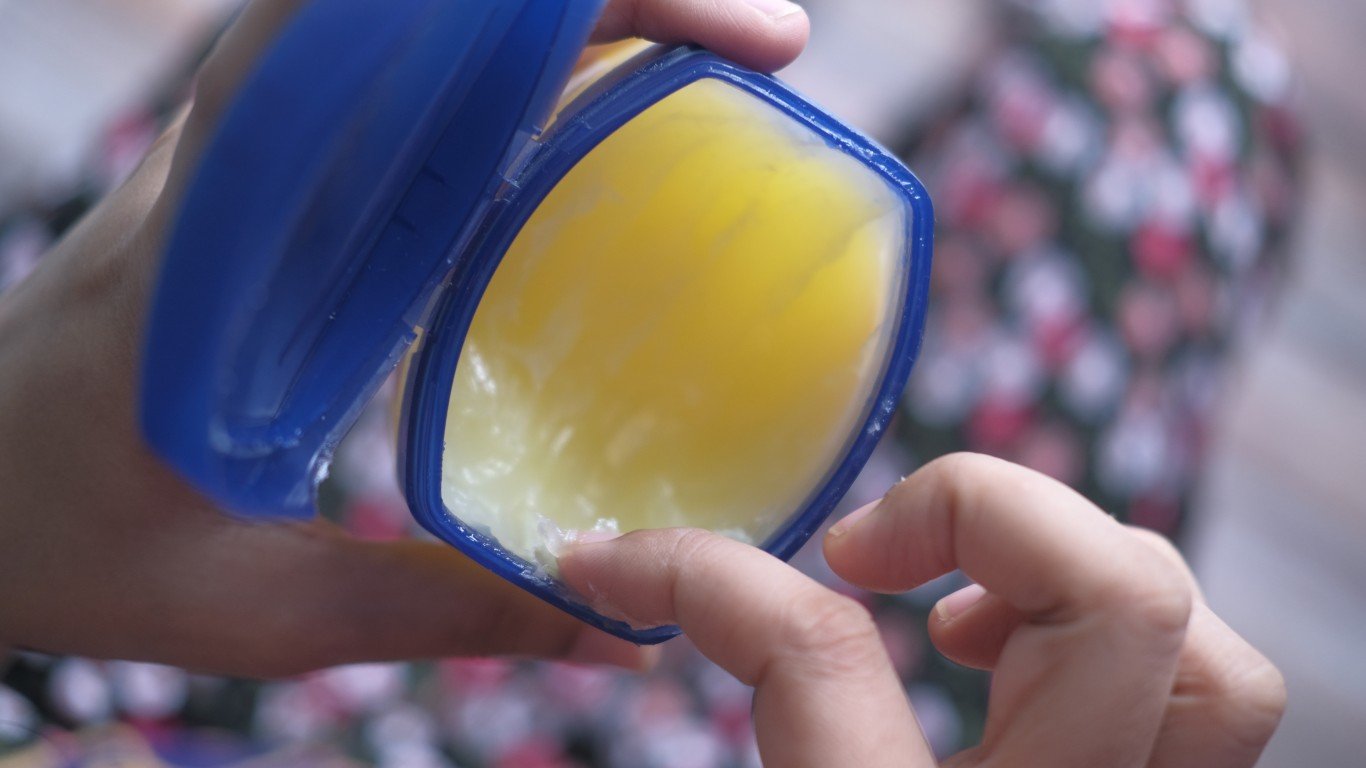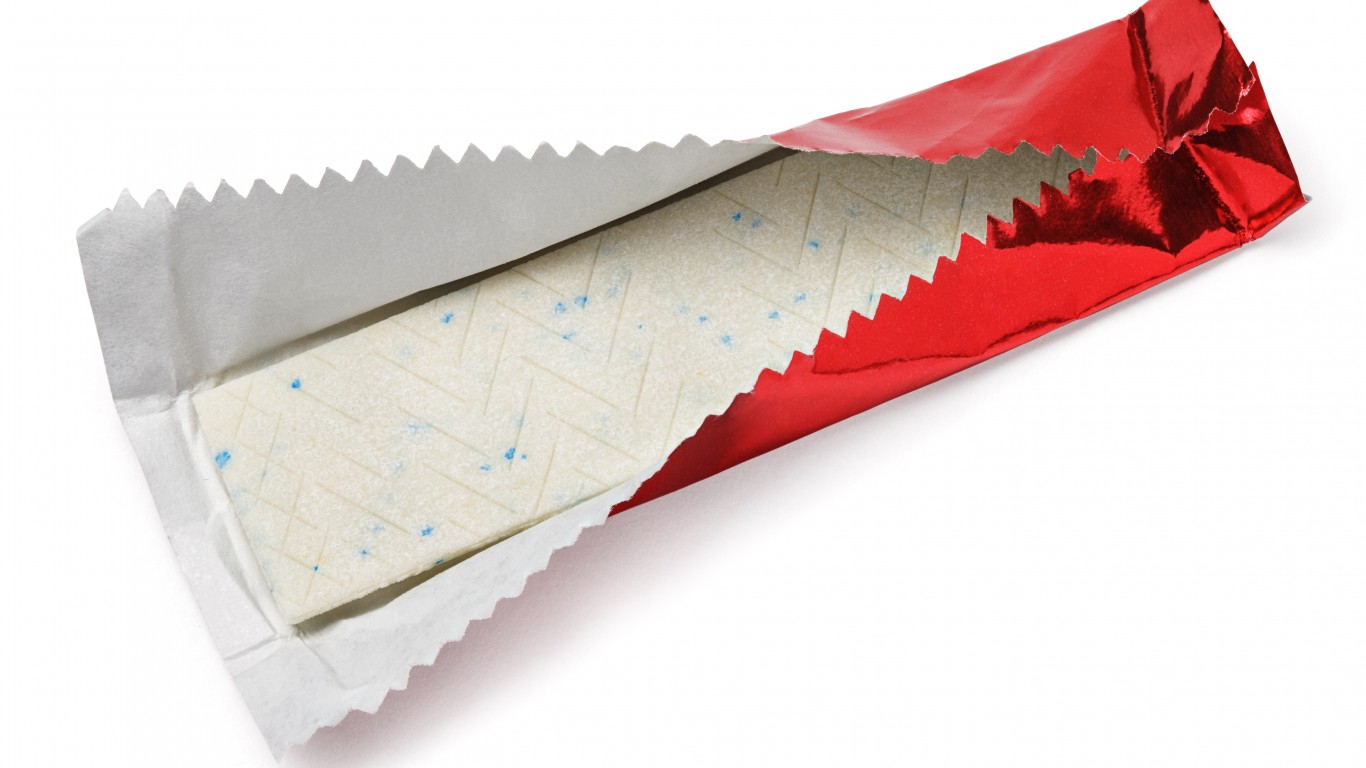
Mauve
>Year: 1856
While attempting to synthesize an artificial quinine from coal tar for the treatment of malaria, an 18-year-old chemistry student named William Perkin accidentally invented a purple pigment that could dye silk. Abandoning his pharmaceutical aspirations, Perkin named his color mauve after a French flower and established one of the first synthetic dye factories in the world, using his new aniline (an organic compound) dyes. His discovery revolutionized the fashion world and brought bright colors – which were previously very costly to create – to the middle classes.

Vaseline
>Year: 1859
The chemist Robert Chesebrough got his start clarifying kerosene from whale fat, but his job was rendered obsolete when petroleum was discovered in Titusville, Pennsylvania. Intent on experimenting with the new crude oil, Chesebrough traveled to the oil fields, where he heard workers complaining about “rod wax,” a troublesome, jelly-like buildup that repeatedly clogged their pump equipment. When some of the workers claimed that the jelly healed their cuts, Chesebrough began refining it and eventually patented petroleum jelly, which he named Vaseline.

Chewing gum
>Year: 1870
There’s evidence of ancient Greeks and Scandinavians chewing on tree bark. Ancient Mesoamericans chewed a boiled tree sap called chicle, which is what modern-day chewing gum is derived from. In the 1850s, exiled Mexican president Antonio Lopez de Santa Anna approached inventor Thomas Adams in New York City with a cache of chicle and a plan to get rich selling tires. Adams attempted to vulcanize the chicle like rubber, but to no avail, instead using the chicle to create chewing gum, marketed as Chicklets.

Saccharin
>Year: 1879
While working under laboratory professor Ira Remsen at Johns Hopkins University, postdoctoral researcher Constantin Fahlberg was conducting experiments with coal tar. One evening, he noticed his dinner tasted particularly sweet, and then realized he hadn’t washed his hands after work. Fahlberg and Remsen found the sweet substance in the lab and published their chemical discovery of this artificial sweetener in 1880. Fahlberg subsequently patented the substance, which he called “saccharin.”

X-Ray
>Year: 1895
While replicating a previously performed experiment with a cathode ray tube covered by an aluminum window and a piece of cardboard, German physicist Wilhelm Röntgen noticed a green, glowing light on a piece of paper in the room. Knowing that cathode rays could not travel so far, especially through cardboard, he named the unknown rays X-radiation, and began testing materials that the rays could penetrate. While holding a piece of lead, Röntgen inadvertently saw the first radiographic image: his own skeleton hand. He proceeded to capture images on photographic plates, creating the first X-ray photographs.






